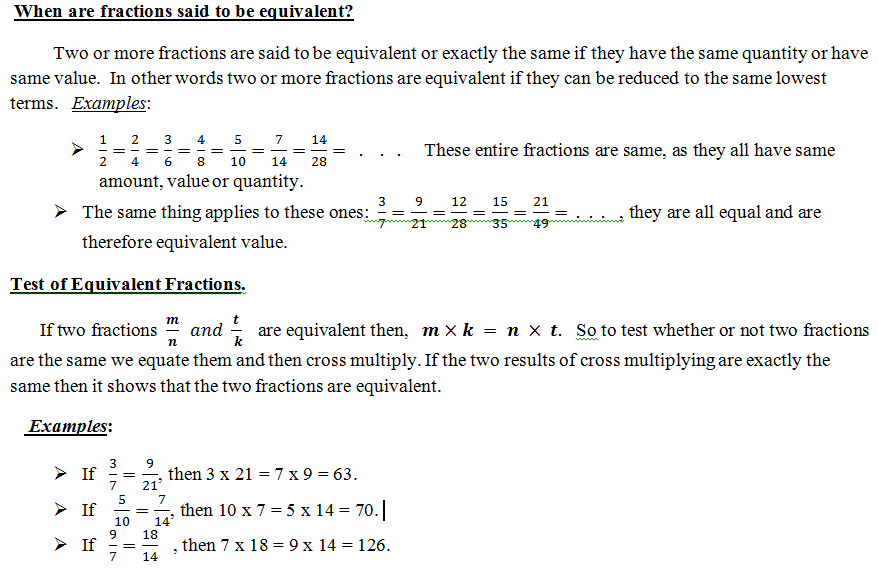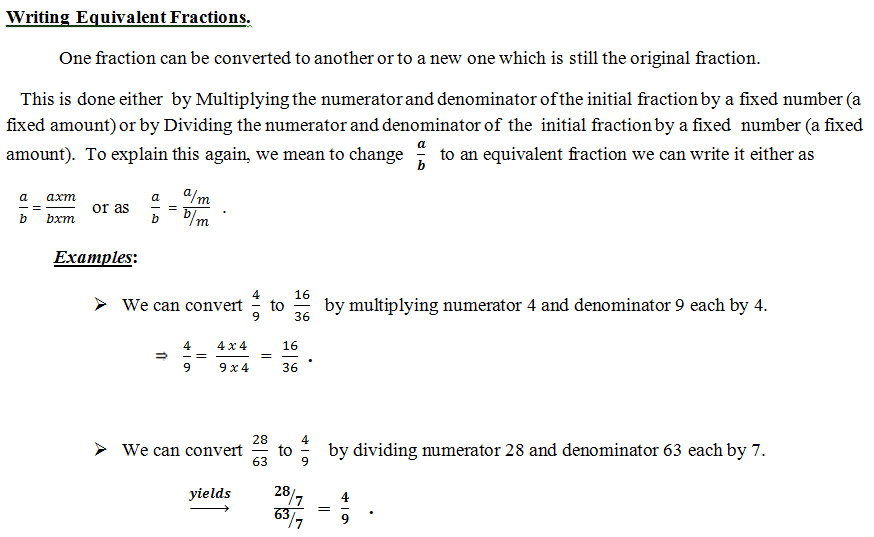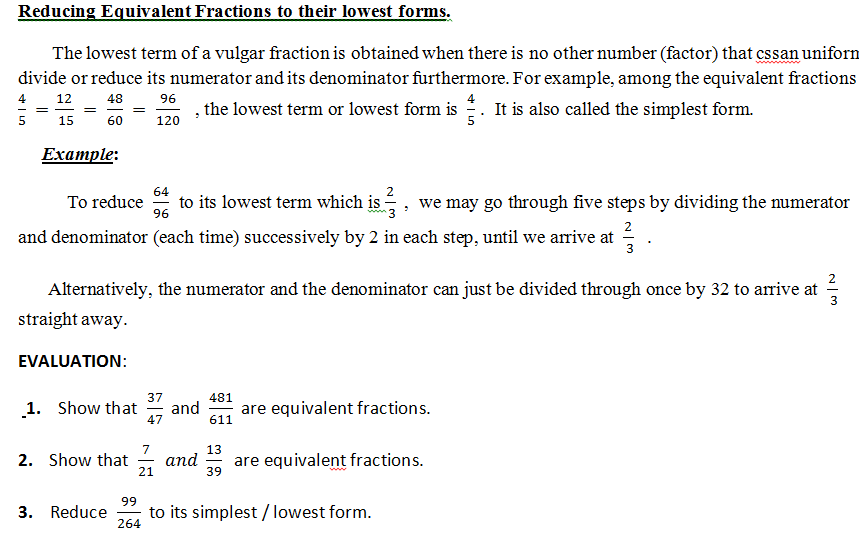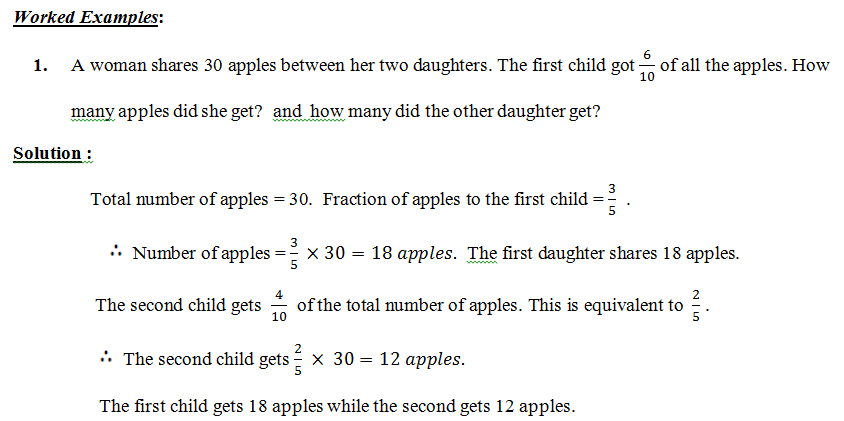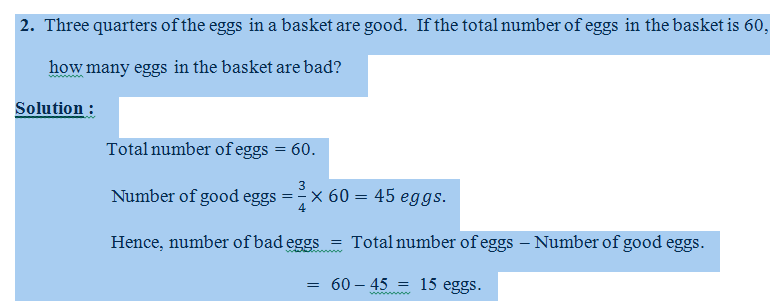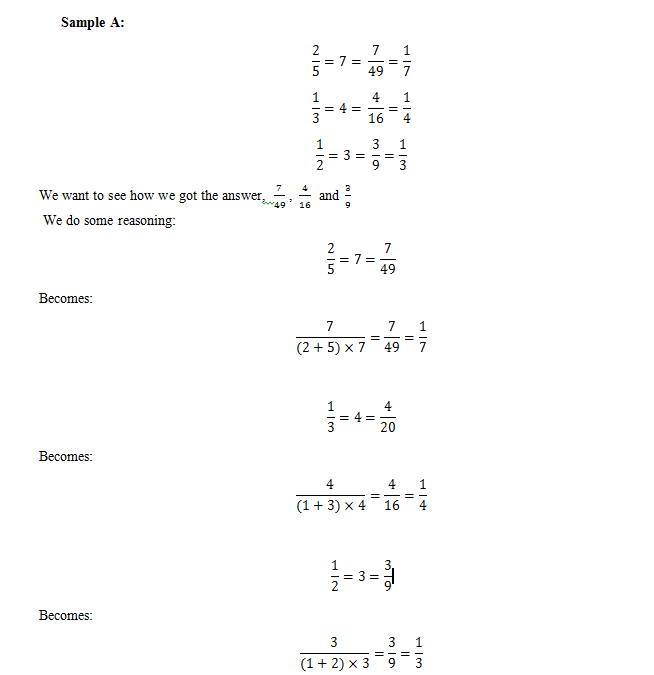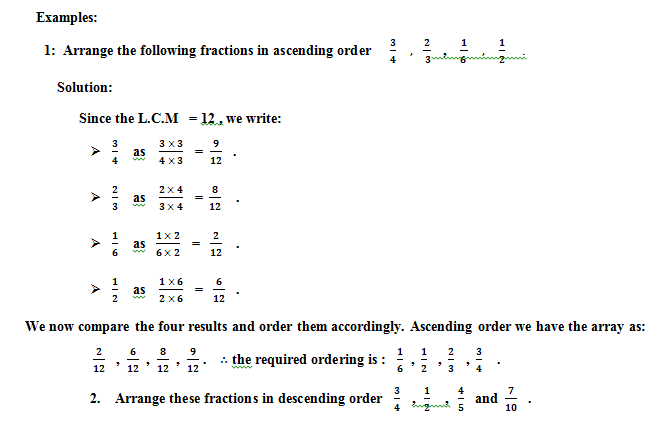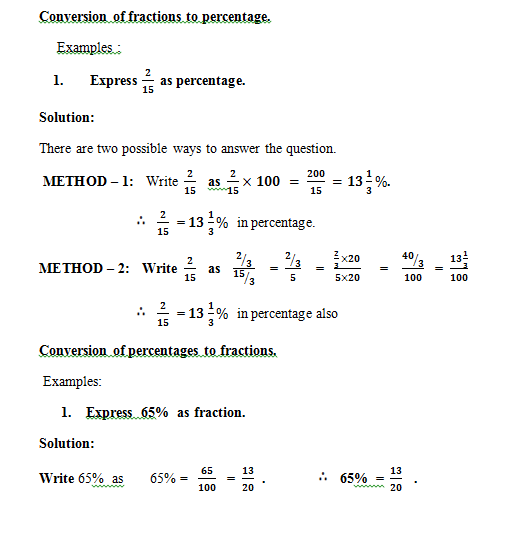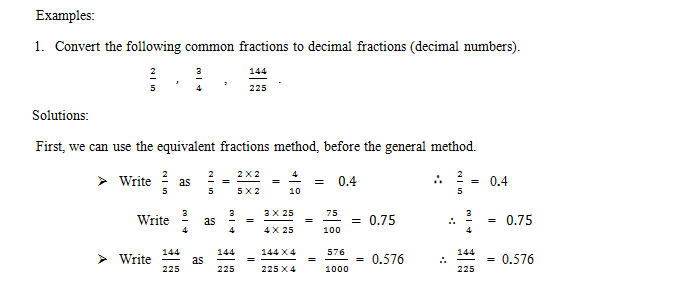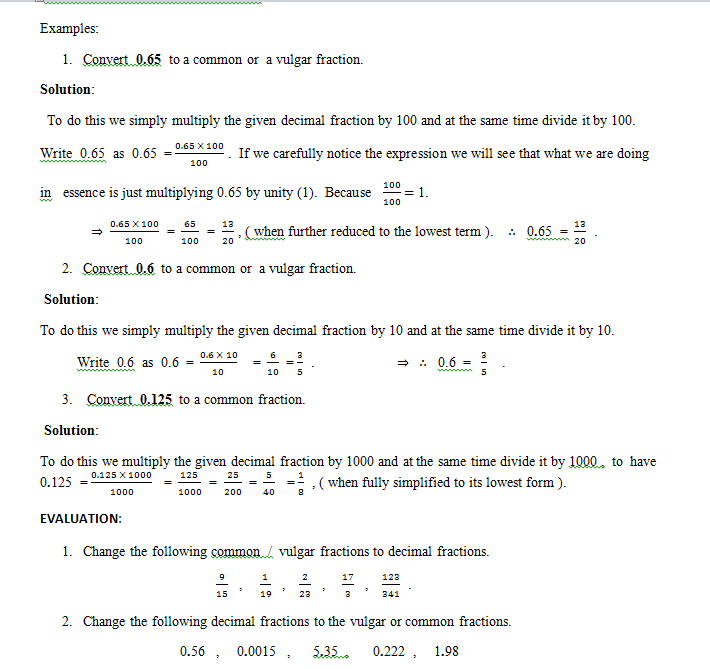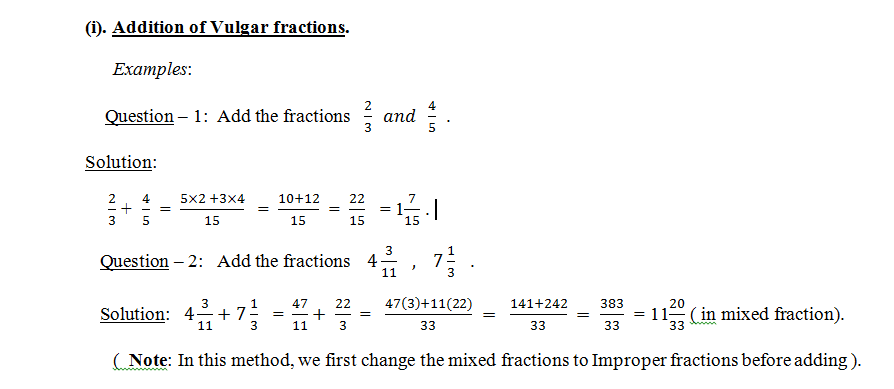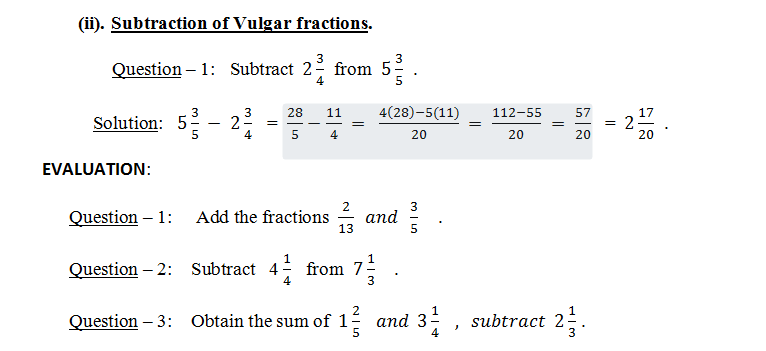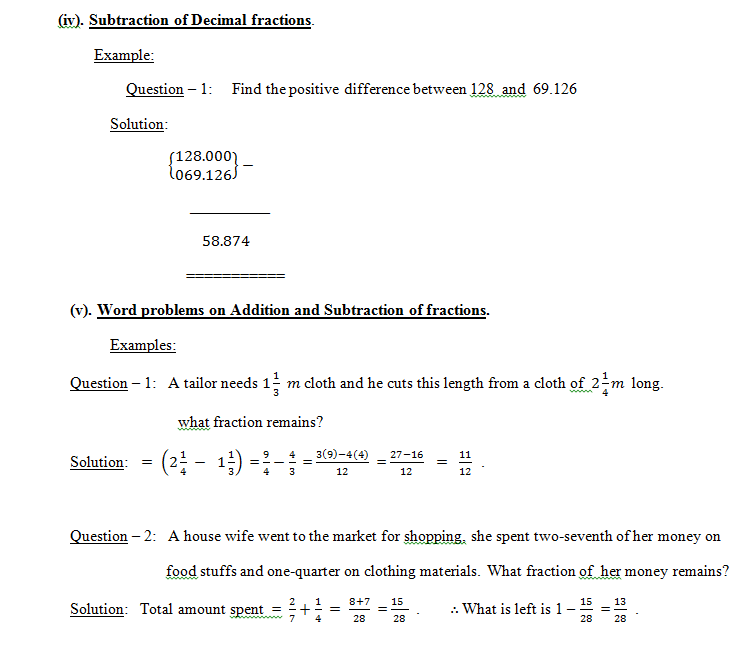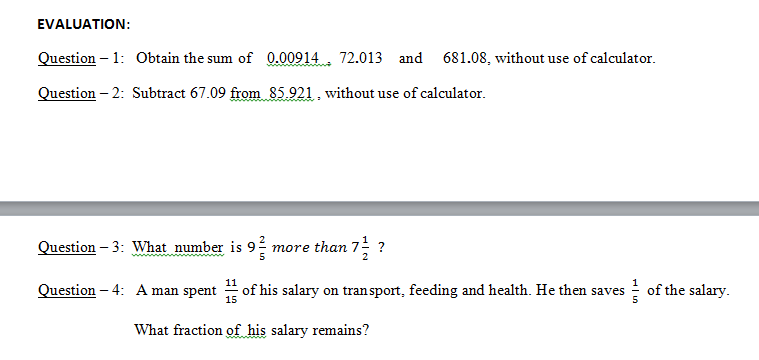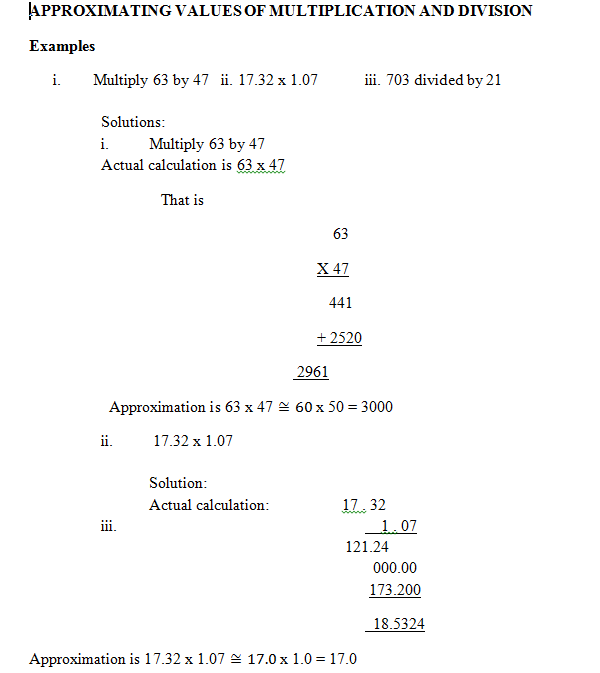TOPIC: FACTORS, PRIME NUMBERS, LEAST COMMON MULTIPLES (LCM) & HIGHEST COMMON FACTORS (HCF) OF INTEGERS.
CONTENTS:
(i). Definition of Factors; and the Relationship between Factors and Multiples.
(ii). Meaning and examples of Prime Numbers.
(iii). Difference between Factors and Prime Factors.
(iv). Expressing Numbers as product of Prime Factors.
(v). Common factors and the Highest Common Factor (H.C.F) of two, three or more numbers
(vi). Least Common Multiple (L.C.M) of Numbers.
LESSON 19
DEFINITION OF FACTORS AND MULTIPLES & THEIR RELATIONSHIP
FACTORS: When two or more smaller numbers multiply to give a bigger number, these smaller numbers are called factors of the bigger number. In another sense we can say a factor is a number which can divide another number exactly without any remainder.
Examples:
The factors of 24 are 1 , 2 , 3, 4 , 6 , 8 , 12 , and 24.
The factors of 60 are 1, 2, 3, 4, 5, 6, 10, 12, 15, 20, 30, and 60.
The factors of 50 are 1, 2, 5, 10, 25 and 50.
MULTIPLES: This is the product of numbers (factors) that gives other numbers.
Thus, 24 is: a multiple of 1 twenty-four times.
a multiple of 2 twelve times.
a multiple of 3 eight times.
a multiple of 4 six times.
a multiple of 6 four times.
a multiple of 8 three times.
a multiple of 12 two times.
a multiple of 24 (itself) once.
This shows the relationship between Factors and Multiples.
NOTE: The Teacher can make students do same analysis (orally) for 60 and 50 as has just been done for 24 above.
MEANING AND EXAMPLES OF PRIME NUMBERS.
A prime number is a whole number which is divisible only by itself and 1. In other words, a whole
Number that has no other factor(s) except 1 and the number itself is referred to as a Prime Number.
Number 1 or Integer 1 is not considered as a Prime Number.
Examples of Prime Numbers:
2, 3, 5, 7, 11, 13, 17, 19, 23, 29, 31, 37, 41, 43, 47, 53, 59, 61, 67, 71,
73, 79, 83, 89, 97. ( as those prime numbers between 1 and 100 ).
EVALUATION:
Question – 1: List the factors of (a). 48 . (b). 64 . (c). 105 .
Question – 2: 48 , 64 , 108 are multiples of which numbers?
Question –3: Define a Prime Number and list all the Prime Numbers between 200 and 300.
LESSON 20
DIFFERENCE BETWEEN FACTORS AND PRIME FACTORS
The factors of 24 are 1 , 2 , 3, 4 , 6 , 8 , 12 , and 24. However, those factors that are Prime among all these are only 2 and 3. Hence, the Prime Factors of 24 are 2 and 3 only.
The factors of 60 are 1, 2, 3, 4, 5, 6, 10, 12, 15, 20, 30, and 60. However, those factors that are Prime among all these are only 2 , 3 and 5. Hence, the Prime Factors of 60 are 2 , 3 and 5 only.
The factors of 50 are 1, 2, 5, 10, 25 and 50. However, those factors which are Prime among all these are only 2 and 5. Hence, the Prime Factors of 50 are 2 and 5 only.
EXPRESSING NUMBERS AS PRODUCT OF PRIME FACTORS.
Examples:
Express 200 as product of prime factors in index form.
Solution:
200 = 4 ×50 =2 ×2 ×25=2×2 ×5 ×5= 2^2×5^2
Express 180 as product of prime factors in index form.
Solution:
2×90=2×2 ×45=2×2×3×15=2×2×3×3×5=2^2×3^2×5.
Express 510 as product of prime factors in index form.
Solution:
2×255=2×3×85=2×3×5×17 .

EVALUATION:
Question – 1: List the factors of 250 and the Prime factors of 250.
Question – 2: List the factors and prime factors of 180.
Question – 3: Express 252 as product of prime factors in index form.
Question – 4: Express 440 as product of prime factors in index form.
Question – 4: Express 15288 as product of prime factors in index form.
LESSON 21
COMMON FACTORS AND HIGHEST COMMON FACTOR (H.C.F) OF TWO, THREE OR MORE NUMBERS.
Worked Examples:
Find the Common factors of 42 and 70.
Solution:
The factors of 42 are 1, 2 , 3 , 6, 7 , 14 , 21, 42.
The factors of 70 are 1, 2, 5, 7, 10, 14, 35, 70.
The factors that are common to both numbers or which are found in the two lists are : 1, 2, 7 , 14.
The highest of the common factors here is 14. Hence, the Highest Common Factor ( H.C.F ) of 42 and 70 = 14.
Find the Common factors of 18 and 27. What is their Highest Common Factor?.
Solution:
The factors of 18 are 1, 2 , 3 , 6, 9 , 18.
The factors of 27 are 1, 3, 7, 27.
Their Common Factors are : 1, 3 , 9. Thus, their Highest Common Factor ( H.C. F ) is 9.
Find the Common Factors of 18, 27 and 36. What is their Highest Common Factor?.
Solution:
The factors of 18 are 1, 2 , 3 , 6, 9 , 18.
The factors of 27 are 1, 3, 7, 27.
The factors of 36 are 1, 2, 3, 4, 6, 9, 12, 18, 36.
Their Common Factors are : 1, 3. Thus, their Highest Common Factor ( H.C. F ) is 3.
LEAST COMMON MULTIPLE (L.C.M) OF NUMBERS.
Worked Examples:
Find the Least Common Multiple ( LCM ) of 42 and 70.
Solution:
Write 42 as product of prime numbers as follows:
42 = 2×21=2×3×7.
Write 70 as product of prime numbers as follows:
70 = 2×35=2×5×7.
Notice those numbers common to both set of prime numbers. The common numbers are 2 and 7.
The Product of 2 and 7 gives 14. Thus, in another way and by the way 14 is the Highest Common Factor
(H.C.F). But the L.C.M (Lowest Common Multiple) = 2×7×3×5=21×10=210.
Therefore the L. C. M of 42 and 70 = 210.
Find the Least Common Multiple ( LCM ) of 18, 27 and 36.
Solution:
Write 18 = 2×9=2×3×3=2×3^2
Write 27 = 3×9=3×3×3=3^3.
Write 36 = 2×18=2×2×9=2×2×3×3=2^2×3^2.
In this example, the numbers to be picked for L.C.M are 3^3× 2^2.
Therefore the Least Common Multiple of 18, 27 and 36 = 3^3× 2^2=27×4=108.
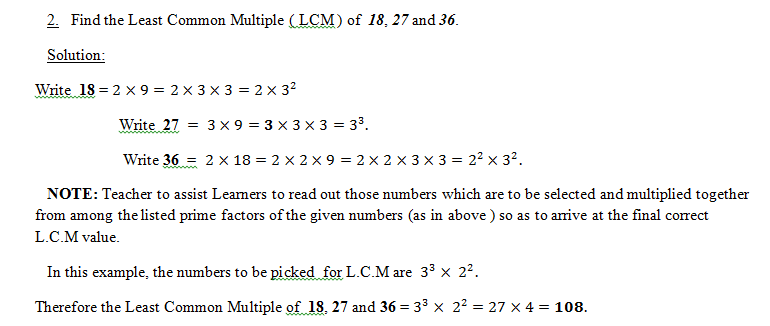
EVALUATION:
Find the Common Factors of 60 and 84. State the Highest Common Factor.
What is the Lowest Common Multiple of (L.C. M) of 60 and 84 ?.
Find the L.C.M and H.C.F of 42, 90 and 105.
LESSON 22
QUANTITATIVE APTITUDE REASONING ON LCM
Sample:
23x23x7 = 448
2x32x5 = 90
22x32 = 36
Example:
Find the missing number: ?? x 3 x 5 x 7 = 1680
Solution:
Let the number be x
∴x×3×5×7=1680
→105x=1680
→x=1680/105
→x=16
Expressing 16 as a multiple of 2 in index form yields 2 x 2 x 2 x 2 = 24
Therefore 24 x 3 x 5 x 7 = 1680
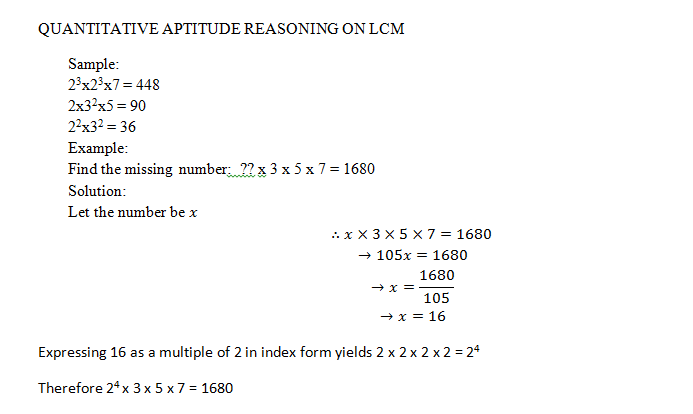
Evaluation
Do the following:
 LESSON 23
LESSON 23
QUANTITATIVE APTITUDE REASONING ON HCF
Sample:
(a). 28 = 2 x 2 x 7 = 22 x 7 (b). 36 = 2 x 2 x 3 x 3 = 22 x 32 (c). 24 = 2 x 2 x 2 x 3 = 23 x 3
Example: Find the missing number in 64 = x6
Solution:
64 =x×x×x×x×x×x
Multiply 2 by it-self in 6 times gives 64.
∴ the missing number is 2 . This implies 64 = 26
EVALUATION
Now do the following by supplying the missing number in each case:
84 = ?? x 2 x 3 x 7
?? = 2 x 3 x 5
?? = 32 x 52

READING ASSIGNMENT:
TEXT BOOK: NEW GENERAL MATHEMATICS for Junior Secondary Schools 1(Upper Basic Edition). Pages 23 – 27).
https://youtu.be/-RhdzNYfF-M
ASSIGNMENT:
TEXT BOOK: NEW GENERAL MATHEMATICS for Junior Secondary Schools 1(Upper Basic Edition). Pages 23 – 27).
Ex. 3c. (Page 24). Attempt Q1 to Q16.
Ex. 3d. (Page 25). Attempt Q1 to Q4.
Ex. 3f. (Page 26). Attempt Q1 to Q4.
Ex. 3h. (Page 27). Attempt Q1 to Q12.
Ex. 3f. (Page 27). Attempt Q1 to Q4.
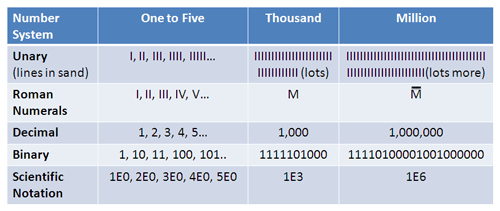
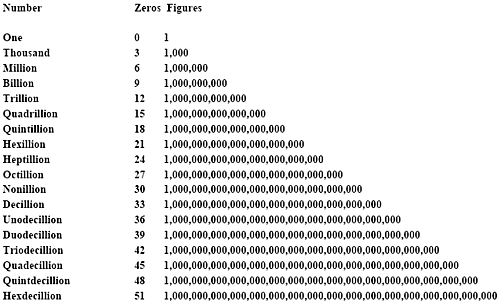
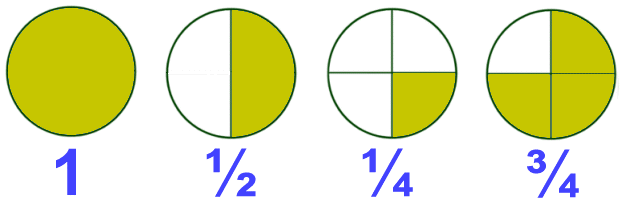
 etc.
etc.  etc.
etc. etc.
etc. 